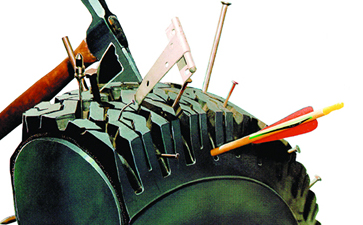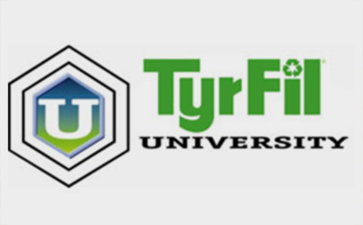Construction Equipment Rental Market Expected to Top $140 Billion by the Year 2024
As the construction and rental equipment industries continue to prosper, the opportunity—across market categories—for advanced tire and road care solutions for the Off-the-Road space remains buoyant. Recent studies from analyst group Global Market Insights points to a construction equipment rental market expected to top $140 billion by the year 2024. While the industry saw some fiscal adjustments in new home construction during the past mid-year, the overall market continues to be healthy—and the need for reliable tire technology to accommodate OTR equipment needs for domestic and global builders is stronger than ever.
As economies around the world continue to expand, upswings in income and living standards have driven a vibrant and growing pace of real estate development that, in turn, has mandated new structure creation, as well as reconstruction to accommodate and retrofit existing buildings in need of modernization. The statistics speak for themselves. Metro and suburban areas are increasing, both domestically and internationally. The urban living trend will be marked by an astounding 9 billion people living in cities or adjunct suburbs by 2050 – according to the Construction Owners Association of America (COAA). That’s two out of every three inhabitants. And as the number of urban dwellers grows, so does the need for more construction and construction-related products, requirements and technology adaptation—a trend that will continue to bode well for the OTR sector in the years to come.
According to the ARA Rental Market Monitor, experts anticipate a roughly 4.5-5.5 percent growth in rental equipment usage alone for both this year and next (2018/2019 respectively). While these and other forecasts map positive growth for the sector, there are other factors which play a role in the progression of the overall construction space—and that actually offer more opportunity for the OTR vehicle maintenance and technology application arenas. Additional perspective and analysis on the complexities of this topic can be found in an in-depth and insightful article in the September 2018 issue of Tire Review magazine, penned by Carlisle’s Mike Arnold, the recently appointed Vice President and General Manager of our brand’s tire fill business unit. But following is an “at-a-glance” outline of several key factors likely to impact the above growth trends:
- As the need for construction projects steadily advances worldwide, so do concerns about the performance and safety of products out in the field. Is the technology operating in a sub-par fashion (e.g., is it putting job site safety and efficiency at risk)? This arises as a potential issue in any industry when market need and demand swell beyond existing capabilities and available products and services.
- Are workers properly informed about operational and safety protocols—and do they have access to the proper training? This is a complementary challenge to the many benefits of increased growth as construction scales on a mass level.
- There is also growing pressure on developers—and especially on large, multi-national brand entities—to incorporate a deeper commitment to using sustainable technologies across the spectrum of their worksite protocols. This need for greater conservation and eco-responsibility will continue to be a major, defining factor for business practices in the construction, OTR and equipment rental marketplaces moving forward. The construction industry accounts for 20% of global emissions. The impact of this data—and growing attention to these issues and the need to achieve greater carbon footprint neutrality—can’t be underestimated in terms of the way it is changing all related industry sectors.
- The expectations for greater compliance with emerging standards and protocols will also mandate that developers pay greater attention to an environmentally responsible ethos. This impact will include general green building standards, but also compliance requirements pertaining to specific elements of renewable energy and reusable/recyclable materials. Companies that are behind the game in these areas will pay the price long term, in terms of lost income and reputation.
- There also will be an increased spotlight on workplace safety that will become an indelible part of operations and the importance of the safety mindset in leading new technology applications. On-the-job injury in the construction field is rising—and greater attention to this matter will be paramount for the entire industry.
One task at hand—as it relates to many of the above new dynamics—will be to ensure that applicable technology can be consistently depended upon to create a safer, more productive work site.
To this end, tire fill technology delivers the assurance of reliability on-the-job. If an OTR tire goes flat in the field, driver and worker safety is compromised and field operations grind to a quick halt. Polyurethane tire fill, however, can be easily pumped into any pneumatic tire to replace air. And unlike air-filled pneumatic tires, poly-filled pneumatics can easily glide over construction site debris—nails, rocks, metal objects, glass and even rebar—without puncture. TyrFil Flatproofing protection enables pneumatic tires to remain virtually flat free. Additionally, it offers a smoother, more comfortable ride for operators versus the rougher, more jolting experience behind the wheel riding on traditional solid apertures.
Moreover, using TyrFil Flatproofing as a tire technology alternative meets increasing demands for sustainability and ensures that OTR operators are doing their part to directly help the environment. The polyurethane-filled, commonly referred to in the industry as foam fill, tires drastically eases environmental strain by helping to keep whole tire and scrap tire waste—and the unwanted emissions and carbon footprint they create—out of domestic and international landfills. The result is a healthier Planet—and a more economical bottom-line for operators, as tire fill can be easily recycled and reclaimed for future use. These factors are just another reason why tire flatproofing technology—such as Carlisle’s branded TyrFil™ line—is a productivity, safety and eco-friendly solution whose time has come for the OTR industry in more ways than one.
This is a robust and exciting time in the OTR, construction and rental equipment related markets. By staying informed about the changing trends affecting our space, we can all play a role in advancing the market forward, through the development and adoption of responsible and financially smart technology that moves our world and global economy ahead with greater efficiency.
Read related news: Construction Equipment Performance Depends on Quality Tire Technology


